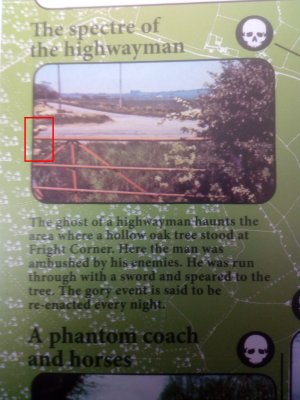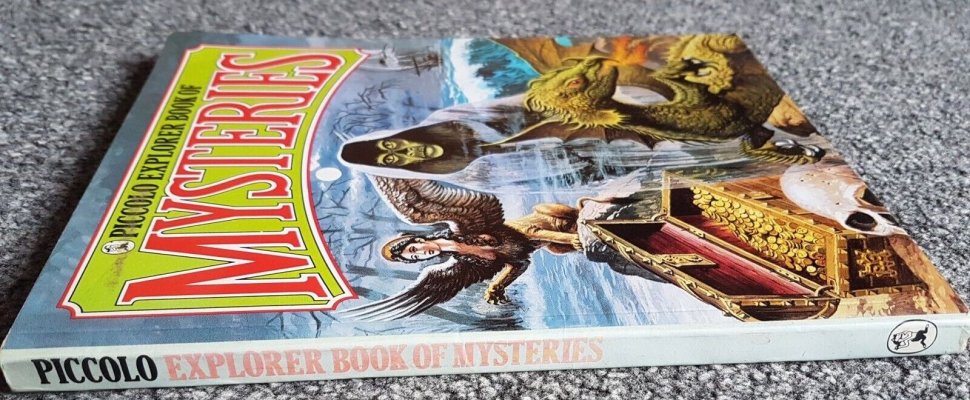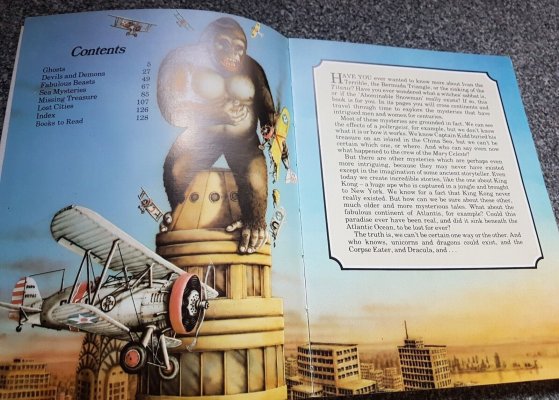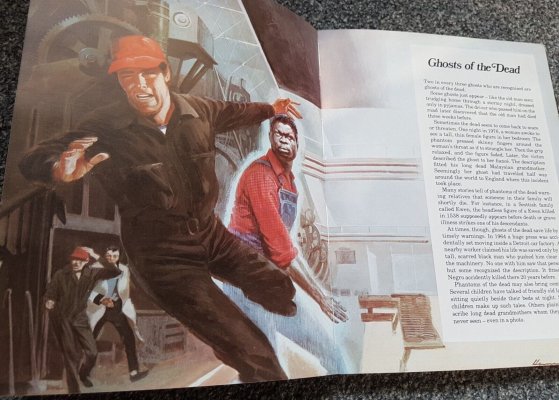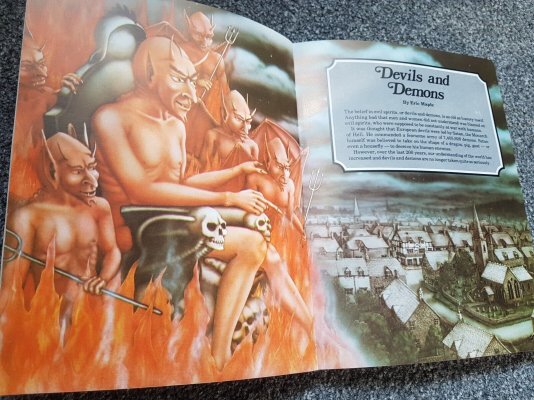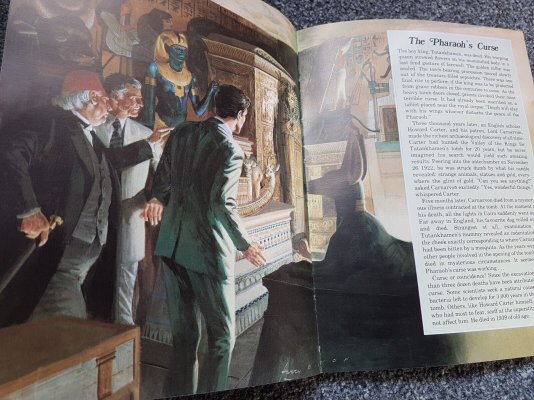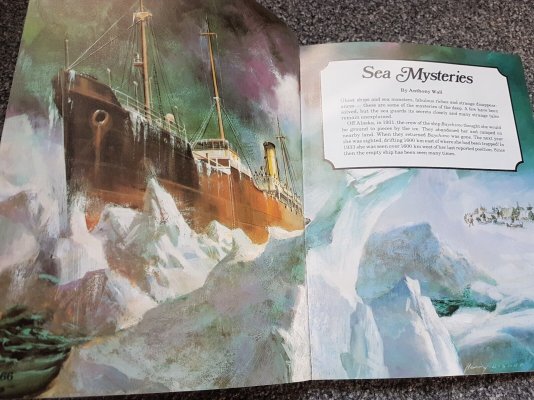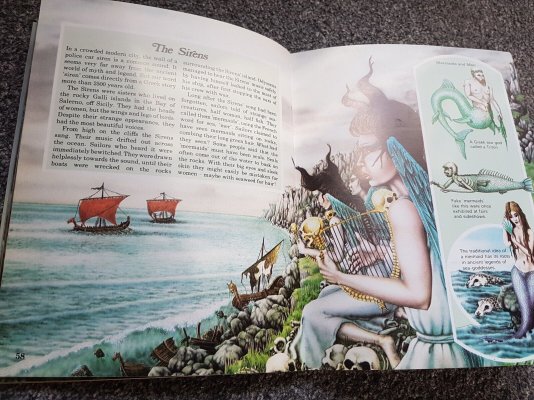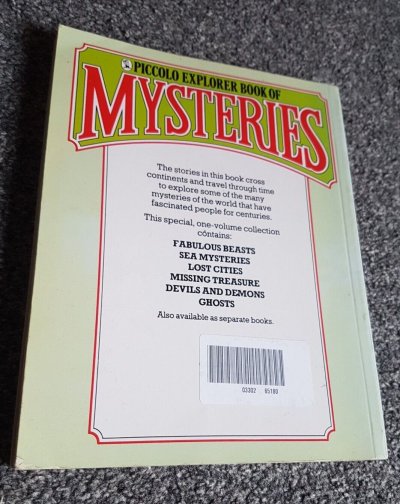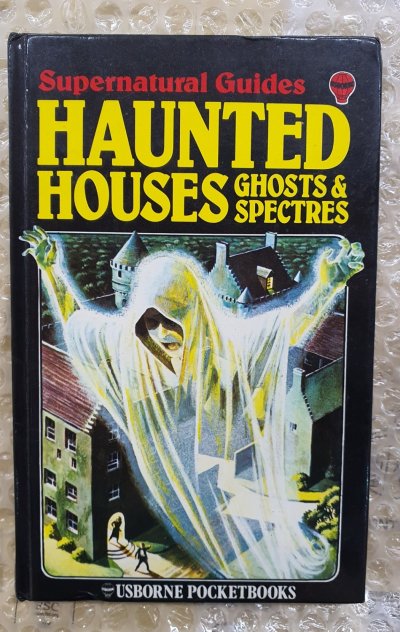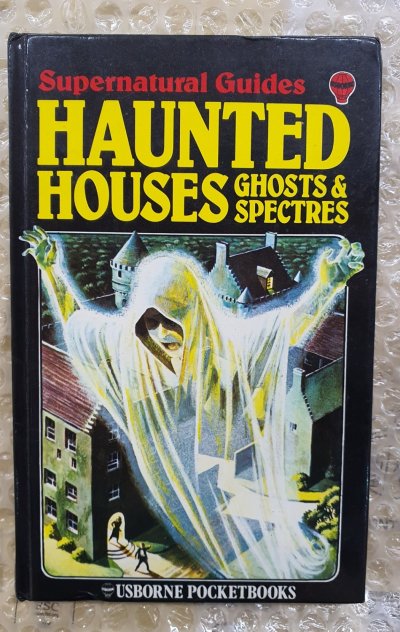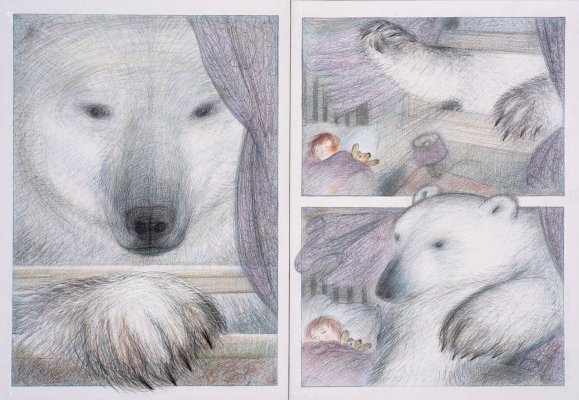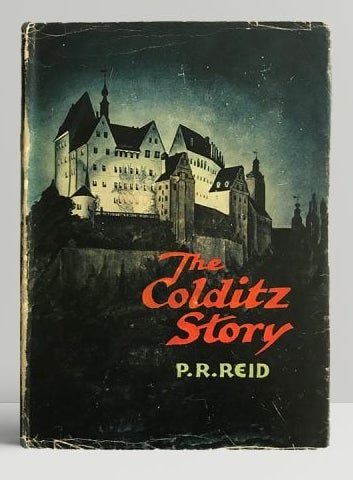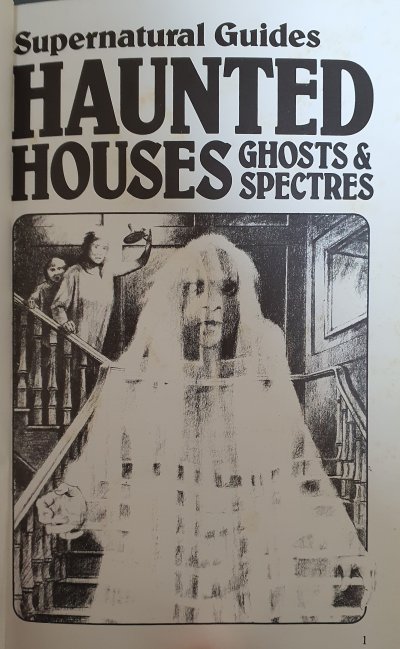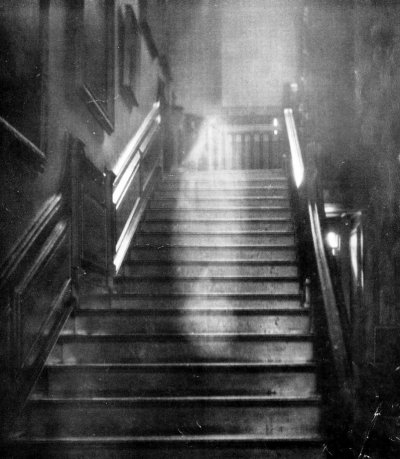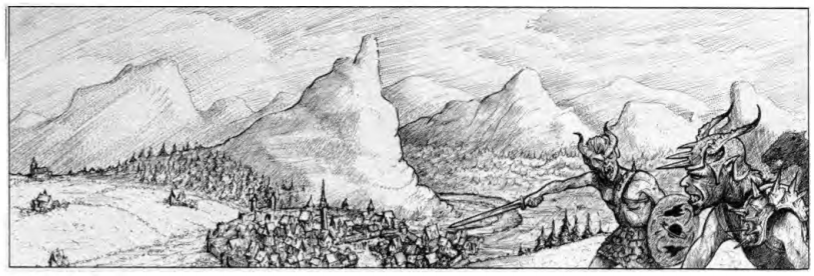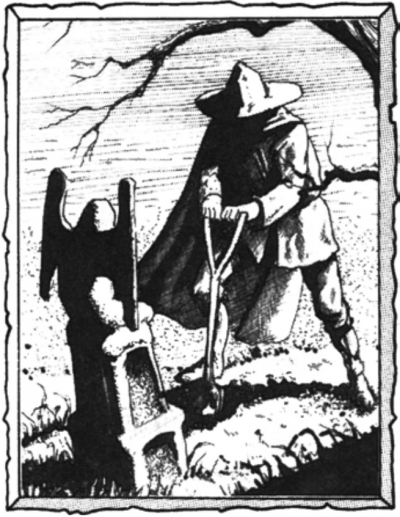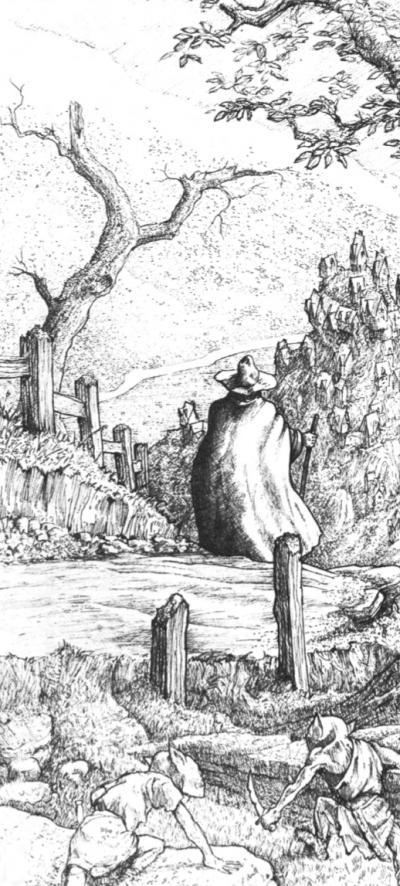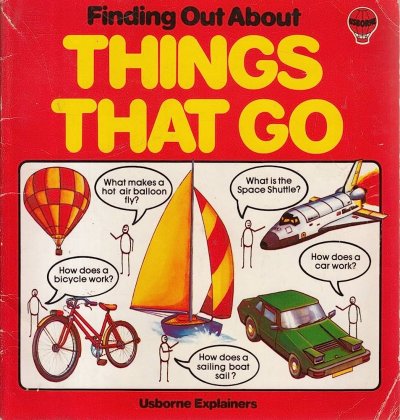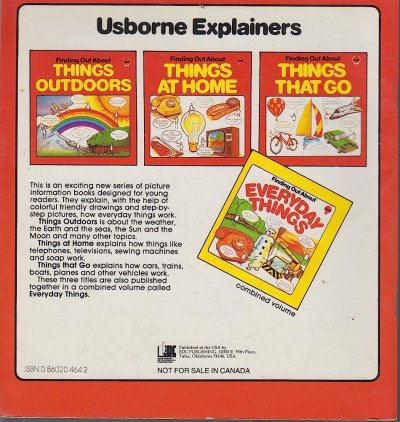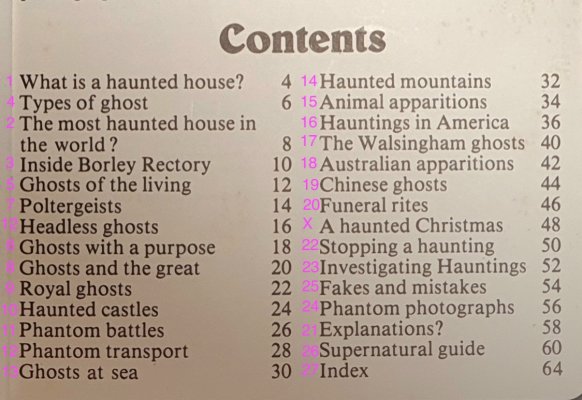Image for reference:
View attachment 67447
And so we turn to the illustrated title page. I think, technically speaking, a 'frontispiece' must be located on the verso of the first leaf (two-sided page) opposite the recto side of the title page, so this is something else.
First of all, why is this page numbered? I have no idea. The contents page starts at page 4 and so does not include it, and the only words on offer are those of the title that is duplicated exactly from the cover--would anybody ever need to refer to this page by number?
Second, I find it very slightly jarring to see a black and white page like this sandwiched between the boldly contrasting hues of the cover and the full-coloured contents page. It feels, to me at least, a mite misleading, since the majority of the book is printed in full colour and is all the better for it. I think my first reaction on finding the re-emergence of colour on the page that follows would be one of relief.
Third, surely this image is inspired or a homage to Captain Hubert C Provand's famous photograph of the Brown Lady of Raynham Hall?
View attachment 67448
Details:
https://www.countrylife.co.uk/natur...tographer-captured-an-image-of-a-ghost-234642
Certainly many elements are present: the plausibly eighteenth-century staircase with balusters, the framed mirror or picture frame, the chiaroscuro contrasts, and, of course, the central apparition.
I think the illustrator (again unspecified) has done something rather clever here. Whereas the original photograph fortuitously casts the viewer himself as the sole implied witness (which lends to the lonely atmosphere), he is here joined in the experience by a mother and child (sex unclear) who serve to condition his reaction: the mother bares an anxious expression, but her very presence and her raising of the candlestick suggests curiosity; her child cowers behind her but is also too curious not to peek. This is a feeling--the suspension betwixt fear and curiosity--that I recall very strongly from my own childhood. To limit myself only to the printed page, I had a black-bound red-lettered hardback about the lives of 'Red Indians' (inherited) that portrayed the most bloodthirsty devils alive, and an encyclopaedia of insects whose full-page spreads in 70s gloss both fascinated and horrified me--
and yet I looked!
That is the mood here.
And so to the figure. What are we to make of her? Transparent, yes, but not uniformly so. The hands, you will notice, seem somewhat more opaque than her face and torso, buy why? I confess, with the horror aspect in mind, strangulation might be near the top of my speculative list... Or perhaps, to give the illustration some dynamism, we are seeing the apparition
in the process of solidification, moving from invisible to visible, transparent to opaque, for reasons and purposes unknown. Once again, as with that lovely cover I discussed last time, there feels as if there is a story behind this picture--something going on--and by turning the page (and buying the book) you yourself will become privy to such tales. Her eyes, for me, are an echo of the poor spectre of the cover: this spirit is animated and driven by some purpose--unwillingly perhaps--and more an ethereal automaton than a being of thought and agency. All this foreshadows the recurring theme of much of the content, which means the picture is doing its job.
Finally, and again this is very much a personal association, the pencilwork of this picture always reminded me of my much-loved and copiously illustrated copy of Warhammer Fantasy Roleplay (WFRP):
View attachment 67449View attachment 67451
View attachment 67450 View attachment 67452
The style is slightly vague and sketchy, but each provides enough to suggest both past and future events and imply a wider world beyond the snapshot one is given; for me the Usborne art provides the same.
Please do add any thoughts you might have.
Next time: the Publication/Contents pages.


 That is incredible. Thank you. Quite the Proustian rush, there. Although I'm surprised I hadn't remembered that your man was quite so resplendently mustachioed.
That is incredible. Thank you. Quite the Proustian rush, there. Although I'm surprised I hadn't remembered that your man was quite so resplendently mustachioed.
